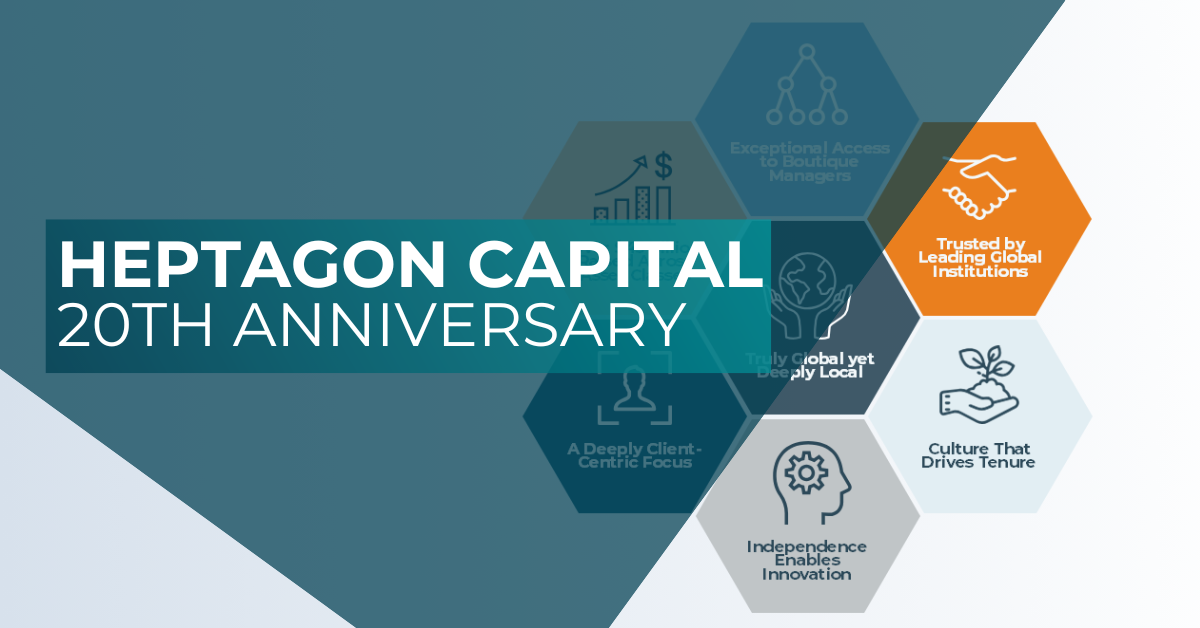
View From The Top: Balancing act
Opinions expressed whether in general or in both on the performance of individual investments and in a wider economic context represent the views of the contributor at the time of preparation.
View from the very top: even with multiple cross-currents, we see good reasons why risk assets should be higher than current levels on a 6-12 month view. Sure, Central Banks continue to face a delicate balancing act: it may not be possible to tame inflation without avoiding a recession. There is, however, a disconnect between managing inflation and managing an inflation narrative. What matters is the direction of travel. Inflationary pressures are becoming less bad and Central Bank rhetoric should become incrementally more positive. This is an encouraging set-up for investors willing to take a longer-term perspective. In the near-term, considerable uncertainties remain whether as a function of geopolitics or mixed economic data points. Our counsel is to be constructive. Think beyond binary equity-bond allocation decisions, look to allocate cash selectively on dips and continue to diversify.
Asset Allocation:
- Equities: Since 1945, every time equities have witnessed a quarterly drawdown of more than 15% – as was the case in Q2 – they have been higher on a 12-month view (using the S&P 500 Index as a proxy, per Bloomberg). This would suggest that the odds look compelling for the longer-term investor. Do not forget that equity markets generally tend to bottom before earnings do – and earnings estimates have only now just started to roll over. Relatively lower inflation would be an incremental positive for this asset class, even if a recession much less so. We believe there remains a strong logic in embracing a range of styles (growth and value, quality and cyclical). After the strong relative performance of value in H1, growth equities may enjoy a better second half.
- Fixed Income/Credit: With just $2.5tr of negative yielding debt globally (and almost all of it in Japan), down from a peak of $18tr at the end of 2020, there are more opportunities within the fixed income space than there have been for some time. For the first time since the Financial Crisis, more than two-thirds of Bloomberg’s Multiverse Bond Index offers an average annual yield of more than 4%. Our general stance is still to remain selective towards the asset class. Credit quality among corporate issuers will matter increasingly as the economy weakens. Watch for growing default risks.
- Currencies: The US Dollar is likely to remain the only game in town. Although this view is highly consensual (per the latest Bank of America Merrill Lynch Fund Manager survey), we see good reasons why Dollar strength should endure, particularly relative to the Euro. The Fed has significantly more relative flexibility than other major Central Banks and the US economy is also relatively less impacted by the current energy crisis than other regions.
- Gold/Commodities: Recent relative weakness may create an attractive entry point into this space, especially for those investors who missed the opportunity previously. We believe that exposure helps provide a long-term hedge against inflationary and geopolitical pressures as well as bringing portfolio diversification benefits.
- Alternative Assets: There is a similar logic attached to owning hard assets. Collateral-backed cashflows can act as both an inflation hedge and a portfolio diversifier. We favour business models with strong balance sheets very selectively within the real estate, infrastructure and logistics spaces.
Those summer vibes are always fun while they last. For some, there has been almost a sense of relative euphoria in financial markets. Equities had recouped over half of their year-to-date losses by mid-August (using the S&P 500 Index as a proxy), while the VIX Index measure of volatility reached almost its lowest level witnessed in 2022. Such achievements have admittedly occurred with low trading volumes and follow what was the worst first half for real returns (using an equity-bond portfolio, per Bloomberg) since at least the Second World War. Whether recent market action can be sustained remains to be seen. Enjoy it while you can. September and Q4 mightmark more of a return to reality.
Our stance is generally a constructive one, even if many investors are still nervous and looking for direction. With cash levels at their highest since 2011 (per the Bank of America Merrill Lynch Fund Manager survey), there is a logic for contemplating increased allocations towards some risk assets. We are all living through a period of general dislocation with multiple cross-currents. Exogenous geopolitical circumstances – whether Russia’s actions in Ukraine or China’s aggression towards Taiwan – are also playing a significant role. However, what matters most, we feel, is the direction of travel. Inflation is a rate of change metric. It is also the dominant factor for financial asset values currently – inflation drives rates.
Declining inflation would clearly be a strong tailwind for both equities and fixed income. Even if it may have peaked in the US and that this can permit for a positive stance towards asset allocation, it does, however, not mean that (1) inflation is going to return to pre-COVID levels any time soon (2) Central Banks are immediately going to loosen their resolve and turn instantly dovish – an 8.5% headline print in the US may be less bad than prior (9.1%), but it still nowhere near where the Fed would like it to be (3) recession won’t be avoided. Cynics might also add that one print does not make a trend. Beware of irrational exuberance, or the assertion that we are definitively at the start of a new bull market cycle rather than perhaps just witnessing a bear market bounce.
All the above implies a balancing act. There are lots of reasons to believe that on a 6-12 month view, risk assets in general and equities in particular should be higher than they are currently. At the same time, there is still a large amount of near-term uncertainty to traverse, especially in the context of a strong recent rally.
Many investors seem to be of the view that US inflation will moderate fast enough that the Fed will pivot its policy. There is also the assumption that the Fed might even look to lower rates – even if pricing pressures persist – in the event of a recession. Neither is a given. We see a disconnect. Forget the above and consider that the last ‘dot plot’ analysis (the interest rate projections of the Fed’s Open Market Committee) calls for a 3.8% rate at the end of 2023 and 3.4% in 2024. This implies no rate cut next year. It will be interesting to see the extent to which these assumptions will have shifted when the plots are next published in September.
For the Fed, there is a clear balancing act it needs to accomplish. Managing inflation and managing an inflation narrative (i.e. what the market believes) are two different things. Further, there is the challenge of making sure that inflation does not become embedded, but equally ensuring that over-tightening does not lead to unforced errors. Its job is further complicated by current market disbelief, or potential investor complacency. The US Central Bank wants tighter financial conditions, but the market has effectively been driving conditions looser, as evidenced by recent price action (at least through to mid-August).
Of course, the Fed does not necessarily have any better insights into the current outlook than investors do. When you say – as the Central Bank has done – that you are data-dependent, then you must reap what you sow. Inflation might still be high, but it is logical to assume that it will fall. With supply chains returning to normal and bottlenecks easing, this is clearly a positive. The Baltic Dry Shipping Index is back at pre-pandemic levels and wheat prices at pre-Ukraine invasion levels, to cite just two examples. The US housing market – and housing rents account for a large chunk of the inflation basket – is cooling rapidly. Wage growth would also clearly be sensitive to a cyclical slowdown. Meanwhile, do not forget that much of the rest of the world has its own problems: China is slowing and the Eurozone is facing an energy crunch. In the round, perhaps it’s no more complicated than the notion that in a hyper-connected world, supply and demand will respond (both on the way up and down) much more quickly to inflationary pressures than ever before.
However, it may not be possible to have lower inflation without a recession. To the extent that history is a gauge, whenever inflation in a developed world nation has been above 5%, it has never been tamed absent of a recession occurring. Interview Fund Managers (as Bank of America Merrill Lynch does every month) and a larger percentage of them currently believe that a recession is likely in the next year than at any time since May 2020, when the pandemic began. Google searches for the term have never been higher.
The Fed has said that it is willing to slow the economy “as much as it takes” to fight inflation. It will be interesting to see for how long its resolve holds. We may already be in recession. Purchasing manager data are generally a strong indicator of future demand. In every major geography, the figures are indicating an economy in contraction (with prints below 50). High inventory levels constitute another valid concern and indicate a mismatch between supply and demand. The same issue is at work in the US housing market, where there is a larger inventory backlog than at any time since 2008. No surprise, perhaps, when a 30-year mortgage is currently 5.65%, more than double where it stood at the beginning of 2021. Delinquency rates are currently over 5% compared to less than 3% a year ago (per Jefferies). One other sobering data point we also recently read is that 20m US households (or 17% of the total) are late on their utility bills – the highest figure since records began (per Bloomberg).
If circumstances look potentially challenging in the US, then spare a thought for other parts of the world. While inflation may have peaked in the US, the Eurozone’s last print of 8.9% showed an acceleration relative to the prior month. UK inflation is now over 10% for the first time in 40 years, with economists forecasting it may reach mid-teen levels. A winter of potential discontent awaits, particularly with elevated fuel prices. For some regions, recession may even be too generous an assumption. How long until we have to start contemplating stagflation?
None of the above makes considerations over positioning simple. Our starting point is an embrace of the assumption that the era of low inflation has gone. The trend towards deglobalisation, the transition towards a greener economy and ageing western population all imply structurally higher inflation than in the past. This has clear implications for asset allocation. We believe that there remains generally too much focus still on equity-bond correlations and the discussions over the relative merits of these major asset classes. It’s not a simple binary decision. As we noted last month, forget TINA (there is no alternative – to equities) and embrace TARA. Put another way, there are reasonable alternatives. Diversification makes sense.
Disclaimers
The document is provided for information purposes only and does not constitute investment advice or any recommendation to buy, or sell or otherwise transact in any investments. The document is not intended to be construed as investment research. The contents of this document are based upon sources of information which Heptagon Capital LLP believes to be reliable. However, except to the extent required by applicable law or regulations, no guarantee, warranty or representation (express or implied) is given as to the accuracy or completeness of this document or its contents and, Heptagon Capital LLP, its affiliate companies and its members, officers, employees, agents and advisors do not accept any liability or responsibility in respect of the information or any views expressed herein. Opinions expressed whether in general or in both on the performance of individual investments and in a wider economic context represent the views of the contributor at the time of preparation. Where this document provides forward-looking statements which are based on relevant reports, current opinions, expectations and projections, actual results could differ materially from those anticipated in such statements. All opinions and estimates included in the document are subject to change without notice and Heptagon Capital LLP is under no obligation to update or revise information contained in the document. Furthermore, Heptagon Capital LLP disclaims any liability for any loss, damage, costs or expenses (including direct, indirect, special and consequential) howsoever arising which any person may suffer or incur as a result of viewing or utilising any information included in this document.
The document is protected by copyright. The use of any trademarks and logos displayed in the document without Heptagon Capital LLP’s prior written consent is strictly prohibited. Information in the document must not be published or redistributed without Heptagon Capital LLP’s prior written consent.
Heptagon Capital LLP, 63 Brook Street, Mayfair, London W1K 4HS
tel +44 20 7070 1800
email [email protected]
Partnership No: OC307355 Registered in England and Wales Authorised & Regulated by the Financial Conduct Authority
Heptagon Capital Limited is licenced to conduct investment services by the Malta Financial Services Authority.



